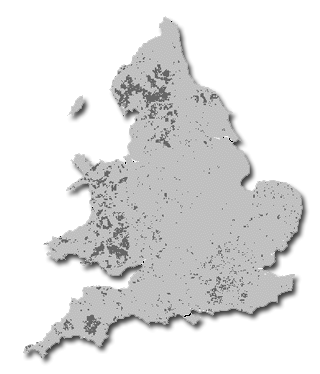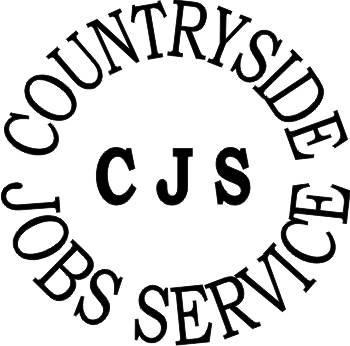Naturenet: Common Land
Common Land
C
ommon land is sometimes used as a term for any land in public
ownership or to which everyone has access. Commons
pre-date parliament, or even the monarchy, and are a legacy from the times
when land was mainly 'wild' and ownerless.It is neither. Land must be legally
registered as a common to enjoy such status. A popular misconception is that
any person has a right to enter common land. Although this is usually the case,
there is now a public right of access to nearly all common land under the Countryside
and Rights of Way Act 2000 , but it is not automatically so. The laws as applied
to common land are often the same as for any other piece of private land, except
for certain people who possess commoners’ rights. This is a complex and
very locally variable part of the law, and readers should seek local advice
about the exact status of the land and its users before trying anything on
what they think might be common land.
, but it is not automatically so. The laws as applied
to common land are often the same as for any other piece of private land, except
for certain people who possess commoners’ rights. This is a complex and
very locally variable part of the law, and readers should seek local advice
about the exact status of the land and its users before trying anything on
what they think might be common land.
Common land and village greens law changes quite a bit, so for a useful summary you might want to look at this recent article from Ashfords: The significance of Common Land and Town and Village Greens.
Commons pre-date parliament, or even the monarchy, and are a legacy from the
times when land was mainly 'wild' and ownerless. The manorial system appointed
owners but the peasantry kept their customary rights. The Commons Act of 1285,
also known as 'the statute of Westminster the second', confirmed landowners'
right to 'approve' common land - that is, to fence off surplus common land
beyond what was required to meet the commoners' needs and turn it to more profitable
agricultural use. This was a frequent source of conflict between landowners
and commoners until the practice of approvement was finally regulated under
the Law of Commons Amendment Act of 1893. It has now been abolished. By the
mid-nineteenth century many common rights had been eradicated by enclosures
but some survive to the present day. The Commons Registration Act of 1965 attempted
to record all common lands, owners and rights. Unfortunately, many failed to
be registered at that time and disputes have arisen as a result. Some commons
have become de-registered because of loopholes in the Act.
The Commons
Act 2006 made some changes to the registration and management
of commons (See a helpful summary of the changes from Hugh Craddock).

Common Land in England & Wales (Source: DETR 1997)
Common land
is subject to 'rights of common', for example, the right to graze certain stock
or the right to collect wood or turf (see Is
there a legal right to collect firewood?). These rights belong to individuals (the 'commoners'), not to
everyone. These individuals are often defined as living in certain properties,
or in a certain area, e.g. a village or parish. Often the rights have died
out, and a common has no commoners; or if the commoners exist they no longer
exercise their rights. This does not stop the land from being a common.
All commons are registered. You can see the register of commons at the local
county council, London borough, metropolitan district or other unitary authority
office. National park authorities may also register commons. There are plenty
of areas called commons which do not have common status - the name is not a
good way to identify a common.
Under section 194 of the Law of Property Act 1925 the erection of any building
or fence, or the construction of any work, which prevents or impedes access
to land which was subject to rights of common on 1 January 1926, is unlawful
unless the oprtation has the consent of the Secretary of State for Environment in England; or the Welsh Government (section 38 of the Commons Act 2006) in addition to any planning or other consent that is required. There are some excpetions to this.
There are 396,800 hectares of common land in England and 175,000 hectares
in Wales contained in around 8675 separate commons. Common land represents
3% of England's area, and 12% of Wales.
Common land is an important nature conservation asset. Almost all the commons
in England and Wales support semi-natural vegetation. Much of this is of high
nature conservation value reflected in the proportion of commons designated
as Sites of Special Scientific Interest and under EU Directives. Around 55%
of common land in England was (as of 2006) designated as a Site
of Special Scientific Interest (SSSI) , and only 63% of this land was in favourable or
recovering condition - much lower than the 73% average for all SSSI land in
England. Further information can be found in Aitchison and Medcalf Common land
and Conservation. Biological surveys in England and Wales - a synthesis. English
Nature Research Report no. 77, 1994.
, and only 63% of this land was in favourable or
recovering condition - much lower than the 73% average for all SSSI land in
England. Further information can be found in Aitchison and Medcalf Common land
and Conservation. Biological surveys in England and Wales - a synthesis. English
Nature Research Report no. 77, 1994.
Government page about Common Land
Open Spaces Society - Commons

